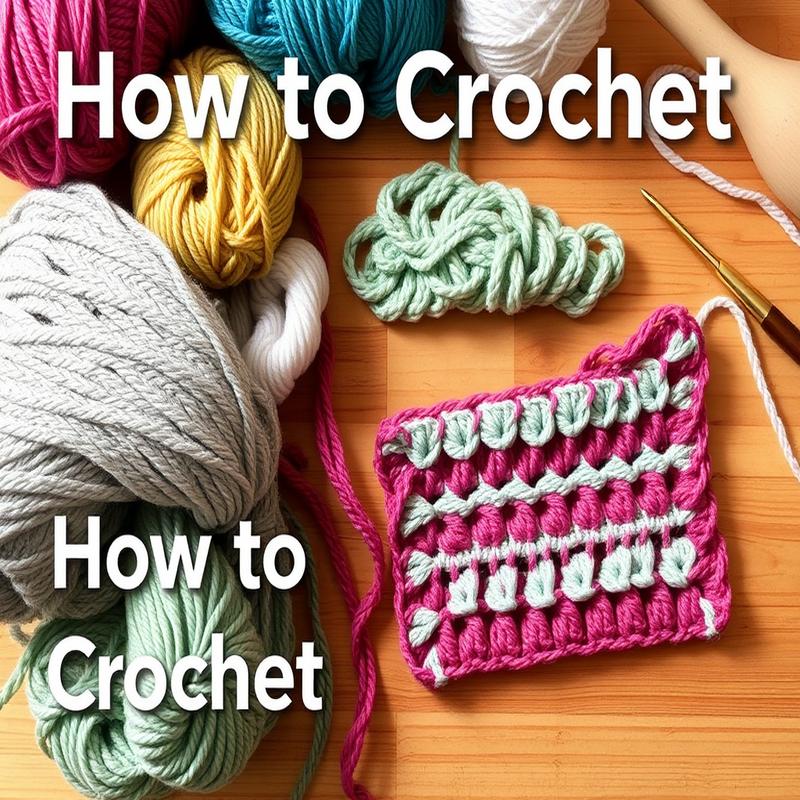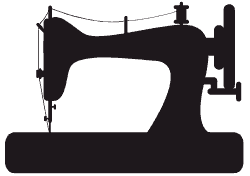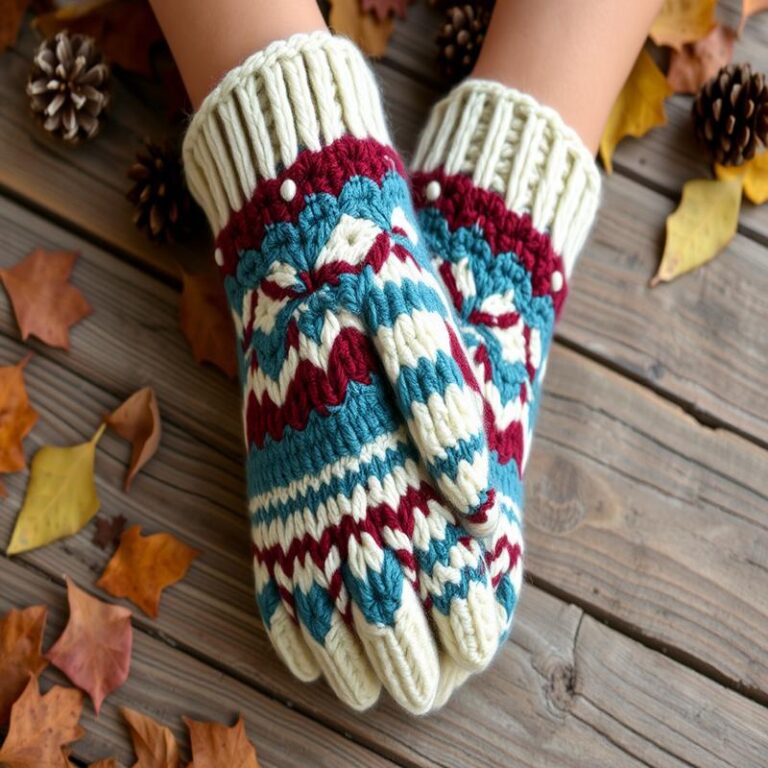how to crochet
Learning how to crochet can be an exciting journey full of creativity and relaxation. Whether you’re picking up a hook for the first time or looking to refine your skills, there’s something incredibly satisfying about turning a simple ball of yarn into beautiful creations. I remember the first time I held a crochet hook; the possibilities felt endless!
Crocheting is more than just a craft; it’s a stress reliever and a way to express yourself. If you’re unsure where to start, you might want to check out this crochet stitch guide that can help familiarize you with different techniques. Once you know the basics, like the chain stitch, you can expand your skills and explore a variety of patterns.
Understanding how to count your stitches accurately is crucial for creating beautiful projects, and I highly recommend reading this article on counting crochet stitches. Let’s dive into the world of crochet, starting with some basic stitches and tutorials to get you hooked!
1. Understanding the Basics of Crochet
Crochet is a craft that transforms yarn into fabric through a series of interlocking loops using a tool known as a crochet hook.
It has ancient roots, believed to have originated in the Middle East and popularized in Europe during the 19th century.
Unlike knitting, which typically uses two needles, crochet is a more versatile technique, allowing for finer control over tension and the design of intricate patterns.
At its core, crochet involves several fundamental concepts:
- Yarn: The material used to create the fabric, which can vary in thickness, texture, and fiber content.
- Hook: The implement used to manipulate the yarn, which comes in various sizes and materials, such as metal, plastic, or wood.
- Stitches: The building blocks of crochet, which include basic stitches like the chain, single crochet, and double crochet, as well as more complex variations.
- Gauge: The measurement of how many stitches and rows fit into a certain area, crucial for ensuring your project dimensions match the pattern.
Understanding these basics lays the foundation for successful projects.
Beginners should familiarize themselves with the terminology used in crochet patterns.
Common terms include:
- Chain (ch): Often the starting point of a project, made by simply looping the yarn through the hook.
- Slip stitch (sl st): A stitch used for joining or moving through stitches without adding height.
- Row: A horizontal line of stitches.
Each project begins with a pattern that outlines the required materials and instructions.
By grasping these foundational elements, crocheters can embark on a fulfilling journey into the world of yarn and creativity.
The beauty of crochet lies in its capacity for personalization, allowing makers to infuse their character into every piece created.
Essential Crochet Tools and Supplies

To start crochet, having the right tools and supplies is essential for both beginners and seasoned crafters.
Crochet Hook
The crochet hook is the most vital tool in your crochet kit. They come in various materials such as aluminum, plastic, and bamboo. The size of the hook you choose will depend on the yarn weight you will be using. Common hook sizes include:
- G (4.0 mm)
- H (5.0 mm)
- I (5.5 mm)
- J (6.0 mm)
Yarn
Yarn is another key component for your crochet projects. They are categorized by weight, fiber content, and texture. Familiarizing yourself with these categories will help you select the appropriate yarn for your needs. Popular yarn weights include:
- Light (DK)
- Medium (Worsted)
- Bulky
Other Essential Supplies
In addition to hooks and yarn, consider adding the following supplies to your toolkit:
- Scissors: for cutting yarn.
- Yarn Needle: for weaving in ends and sewing pieces together.
- Measuring Tape: to ensure your projects are the correct size.
- Stitch Markers: to keep track of your stitches or pattern repeats.
Storage Solutions
Having a place to store your tools and yarn is important. Look for storage options such as:
| Type | Description | ||||||||
|---|---|---|---|---|---|---|---|---|---|
| Wheeled Carts | Great for transporting your supplies. | ||||||||
| Colored Bins | Keep your yarn organized by color or weight.Selecting the Right Yarn for Your Project Choosing the right yarn is a crucial step in ensuring the success of your crochet project. With numerous types of yarn available, understanding their characteristics will help you make an informed choice. The first consideration is the **fiber content** of the yarn. Yarns can be made from various fibers, including:
Next, consider the **weight** of the yarn, which affects the overall drape and appearance of your finished piece. Yarn weights range from lace to bulky, and each weight comes with its recommended hook sizes. Referencing materials like the Craft Yarn Council’s guide can help you understand these standards better. Another important factor is the **color and texture** of the yarn. Solid colors can highlight intricate stitches, while variegated yarns add visual interest. Texture also plays a role, as some yarns are smooth while others may be fuzzy or textured, which can impact your stitching experience. When selecting yarn, it is also beneficial to consider the **project’s intended use**. For example, if you are making a baby blanket, opt for a yarn that is soft and washable. Additionally, consider checking out crochet patterns that specify yarn types to help guide your selection. Lastly, don’t forget to read the **care instructions**. Some yarns require special washing methods that influence your choice. By keeping these factors in mind, you’ll be well on your way to selecting the perfect yarn for your next crochet project. Learning Basic Crochet StitchesTo successfully embark on your crochet journey, mastering the basic stitches is essential. Each stitch serves as a building block for more complex patterns and projects. Here are the primary crochet stitches you’ll want to learn:
Understanding the Importance of TensionTension refers to how tightly or loosely you crochet. Consistent tension is vital for even stitches and a polished final product. To practice your stitches, try creating swatches with varying tensions. Practice Makes PerfectWhile learning these stitches, keep these tips in mind:
As you become more comfortable, you can explore patterns that incorporate multiple stitches. Mastery of these basic stitches will significantly enhance your crochet experience and open up a world of possibilities for future projects. With patience and practice, you will find crochet to be an enjoyable and rewarding craft. How to Hold Yarn and Hook ProperlyHolding your yarn and hook properly is fundamental to successful crocheting. The way you grip both can significantly affect your tension, speed, and overall comfort while crocheting. Here’s a breakdown of how to hold both: Holding the Crochet Hook1. **Grip Style**:
2. **Positioning**: Holding the Yarn1. **Yarn Positioning**: 2. **Tension Control**: Tips for Comfort– **Relaxation**: Maintain a relaxed posture to avoid strain on your wrists and hands. Once you are comfortable with your hold, you will likely see improvements in your stitching quality and speed. Creating Your First Crochet Project: A Simple ScarfCreating your first crochet project can be an exciting and fulfilling experience. A simple scarf is an excellent choice for beginners because it allows you to practice your stitches and get comfortable with the yarn and hook. Here is a step-by-step guide to help you create your first scarf. Materials Needed
Step-by-Step Instructions1. Chain StitchStart by making a slip knot on your hook. Then, create a foundation chain by making about 20-30 chain stitches, depending on how wide you want your scarf to be. 2. Double Crochet RowTurn your work and yarn over the hook, then insert the hook into the fourth chain from the hook. Yarn over again, pull through the chain (you will have three loops on your hook). Yarn over again and pull through the first two loops. Yarn over once more to pull through the remaining two loops. Continue this process across the row until you reach the end. 3. Repeat RowsTurn your work and chain three to start the next row. Repeat the double crochet until the scarf reaches your desired length, usually around 60 inches. 4. Finish OffCut the yarn, leaving a long tail. Pull the tail through the last loop to secure it. Use a tapestry needle to weave in any loose ends for a polished look. Your first scarf is now complete! Enjoy wearing your new creation or gifting it to someone special. Reading Crochet Patterns and ChartsUnderstanding how to read crochet patterns and charts is essential for any crocheter. These instructions provide a detailed guide on the materials needed, stitch patterns, and the overall construction of your project. Types of Crochet PatternsCrochet patterns generally come in two formats: written instructions and charts. Written patterns use abbreviations and standard stitch terms, while charts provide a visual representation of the stitches. Common Crochet AbbreviationsFamiliarizing yourself with common abbreviations is crucial to interpreting written patterns effectively.
Understanding Crochet ChartsCrochet charts typically display rows and stitches in a grid format. Each symbol in the chart corresponds to a specific stitch. Here is a simple chart legend:
Reading the Entire PatternWhen you begin a new pattern, make sure to:
Understanding patterns and charts opens up a world of possibilities for your crochet projects. Take your time, practice regularly, and soon you’ll find yourself comfortable with reading and interpreting various patterns. Common Crochet Techniques and TipsCrochet offers a variety of techniques that can enhance your projects and make crafting more enjoyable. Basic TechniquesUnderstanding essential crochet techniques can drastically change your experience. Here are a few foundational methods:
Advanced TechniquesOnce you’ve mastered the basics, consider exploring advanced techniques to elevate your work:
Tips for Successful CrochetingTo make your crochet experience smoother, consider these helpful tips:
Always remember, each project is a chance to refine your skills. Crochet is a journey of creativity where every stitch presents an opportunity to express yourself. Incorporate these techniques and tips into your practice to enhance your overall crochet experience and achieve the beautiful results you aspire to. Troubleshooting Common Crochet Problems
Crocheting can be incredibly rewarding, but it’s not uncommon to encounter a few hiccups along the way. Understanding how to troubleshoot these issues can save you time and frustration. Below are some common problems and their solutions. 1. Uneven TensionUneven tension can lead to a project that looks lumpy or misshapen.
2. Stitches Too Tight or LooseIf your stitches are too tight, it can be difficult to insert your hook. Conversely, too loose stitches can lead to gaps.
3. Missing StitchesIt’s easy to miss stitches, especially in intricate patterns. Tip: Count your stitches regularly, especially at the end of each row.
4. Twisted or Tangled YarnTangles can occur when you’re crocheting, especially with multiple skeins.
5. Crooked EdgesCrooked edges can be caused by not working the same number of stitches in every row.
By identifying and addressing these common problems early, you can enhance your crocheting experience and ensure that your projects come out just as you envisioned. Remember, even experienced crocheters encounter issues—perseverance 1. Understanding the Basics of CrochetCrochet is a versatile craft that involves creating fabric from yarn using a hooked tool called a crochet hook. Unlike knitting, which requires two needles, crochet is typically done with a single hook. The foundation of crochet is formed by pulling loops of yarn through one another to create stitches. In this overview, we’ll cover fundamental concepts essential for anyone starting on their crochet journey. What is Crochet?Crochet derives its name from the French word “croche,” meaning hook. It allows crafters to create a variety of items, such as clothing, accessories, and home decor. Crochet can be simple or intricate, depending on the desired outcome and the techniques employed. Types of CrochetThere are several types of crochet, each with unique characteristics:
The Benefits of CrochetCrochet is not only a creative outlet but also offers numerous benefits:
Understanding these basic concepts is crucial for mastering crochet and embarking on a fulfilling creative adventure. As you progress, explore the various styles and techniques to find what resonates with you. conclusionLearning how to crochet has been such a fulfilling journey for me, and I hope you feel inspired to dive in, too. Whether you’re picking up a hook for the first time or just polishing your skills, there are so many resources available to guide you. You can explore various crochet patterns that are perfect for beginners. Understanding how to read crochet patterns can really boost your confidence. If you’re curious about the basics, I recommend checking out Lion Brand for a solid foundation. Also, exploring the basic crochet stitches will open up a world of creative possibilities. Don’t forget to share your own experiences and questions in the comments! We’d love to hear what projects you take on next. Be sure to follow us on social media to keep the conversation going! Happy crocheting! “`html Frequently Asked QuestionsWhat materials do I need to start crocheting?To begin crocheting, you will need yarn, a crochet hook, and scissors. Optional tools include a yarn needle for weaving in ends and stitch markers to keep track of your stitches. How do I choose the right yarn for my project?The right yarn depends on the project you want to create. Consider the weight, texture, and fiber content. Beginners often find worsted weight yarn easier to work with. What crochet stitch should I learn first?Start with basic stitches like the chain stitch, single crochet, and double crochet. These foundational stitches are essential for building more complex techniques. How do I read a crochet pattern?Crochet patterns use abbreviations and symbols to describe stitches and techniques. Familiarizing yourself with common abbreviations (like sc for single crochet) is crucial for understanding and following patterns. Can I crochet without a pattern?Yes, many crocheters create their own designs without patterns. Start with a simple shape and let your creativity guide you. Experimentation can lead to unique and personal projects. What is the best way to finish off my crochet project?To finish a project, cut the yarn leaving a few inches, pull the yarn through the last loop on your hook, and tighten it. Weave in the ends using a yarn needle to secure and hide them. How do I fix mistakes in my crochet work?If you make a mistake, you can either frog (rip out) the stitches back to the error and redo it or use a technique called ‘tinking’ |






